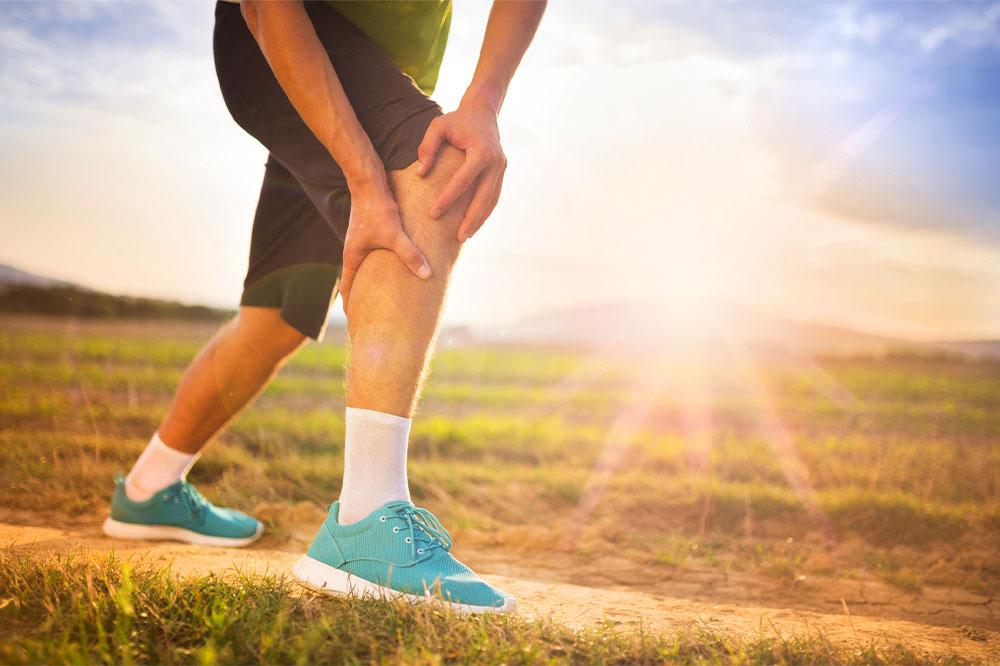
Deep vein thrombosis – symptoms, causes, risk factors, and remedies
Some veins are located deep inside the body, which are called deep veins. When a blood clot forms in one or more deep veins, the condition is called deep vein thrombosis. The clotting of the blood usually occurs in the lower leg, thigh, or pelvis, partially or completely blocking blood flow through the vein. Deep vein thrombosis is a serious condition with a range of symptoms and complications. However, it can be treated and prevented.
Read on to learn about different aspects of deep vein thrombosis.
Signs and symptoms
Not everyone with deep vein thrombosis exhibits symptoms. In fact, only about half of the people with the disease develop noticeable signs and symptoms, which may include the following.
- Pain, swelling, and tenderness in one of the legs
- Severe pain in the affected area
- Warm skin in the area of the blood clot
- Red or discolored skin on the affected area
Deep vein thrombosis typically affects one leg, and the pain may worsen when bending the foot upwards towards the knee. Moreover, those who develop the condition in the arm may experience the following symptoms.
- Swelling in the arm or hand
- Pain running from arm to forearm
- Weakness in the affected hand
- Pain in the neck and shoulder
- Discoloration of the skin
In some cases, deep vein thrombosis can lead to a life-threatening complication called pulmonary embolism. These are the warning signs and symptoms of pulmonary embolism.
- Shortness of breath, which occurs suddenly
- Worsening chest pain or discomfort
- Rapid breathing and heartbeat
- Coughing up blood
Causes and risk factors
Deep vein thrombosis is the result of a blood clot, which blocks a vein, preventing proper circulation of blood in the body. A blood clot may occur due to a variety of factors. Let’s look at some factors that may increase the risk of clotting and deep vein thrombosis.
- Injury or surgery
Sometimes, injury causes damage to the walls of the blood vessels, obstructing blood flow. Similarly, blood vessels may get damaged during surgery, which can cause clotting that may lead to deep vein thrombosis. - Inactivity
Long periods of inactivity may cause blood to accumulate in the lower limbs and pelvic area. This slows down blood flow in the legs, contributing to the formation of a clot. - Obesity
This puts more pressure on the blood vessels, especially those located in the legs and pelvis, increasing the risk of the disease. - Certain diseases and conditions
Some conditions that increase the risk of a blood clot and deep vein thrombosis include cancer, heart disease, hepatitis, rheumatoid arthritis, thrombophilia, and antiphospholipid syndrome.
Treatment
The treatment is focused on preventing the blood clot from getting bigger or breaking off and traveling to the lungs, and reducing the risk of another deep vein thrombosis. Here are some common treatment options.
- Compression stockings
These special socks are made to help decrease pain, limit swelling, and reduce the risk of developing ulcers. Based on doctor’s recommendation, these stockings must be worn every day for at least two years. - Filter
It is a small device that prevents clots that break loose from entering the lungs. The device is inserted into a large vein or vena cava in the abdomen. - Elevating the affected leg
Keeping the leg in an elevated position helps relieve pressure in the veins of the calf and prevent the buildup of blood, easing deep vein thrombosis symptoms.
Lifestyle changes and home remedies
Making certain lifestyle changes and trying home remedies given below may help in the management of deep vein thrombosis.
- Exercising
Knee pulls, foot pumps, ankle circles, and other exercises can help reduce symptoms if practiced regularly. However, it is advisable to learn these exercises from a certified professional. - Foods to eat and avoid
Nutrient-dense, balanced meals are crucial to managing deep vein thrombosis. Health experts recommend consuming lots of fruits, veggies, and fiber-rich foods. However, one must avoid foods rich in vitamin K, such as kale and spinach, as these may interfere with other treatment options. - Leading an active lifestyle
Moving about is a great way to prevent the formation of blood clots. It is advisable to go for a walk daily and have a physically active lifestyle. - Managing blood pressure
People with high blood pressure are at a higher risk for developing deep vein thrombosis. Therefore, it is important to keep blood pressure levels in check by eating healthy, reducing stress, and staying physically active.




